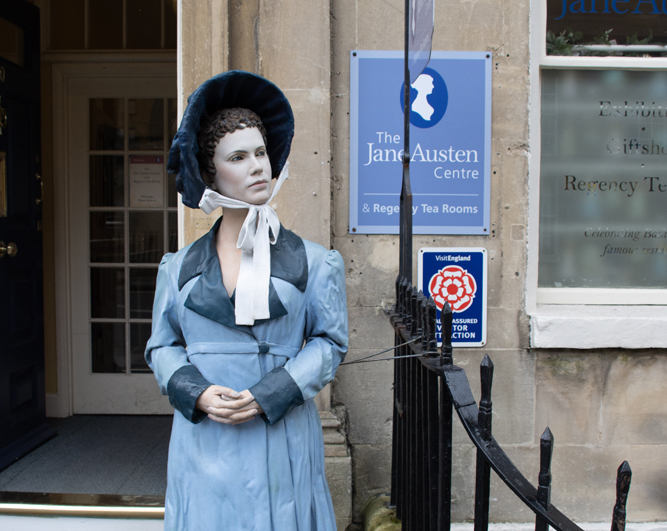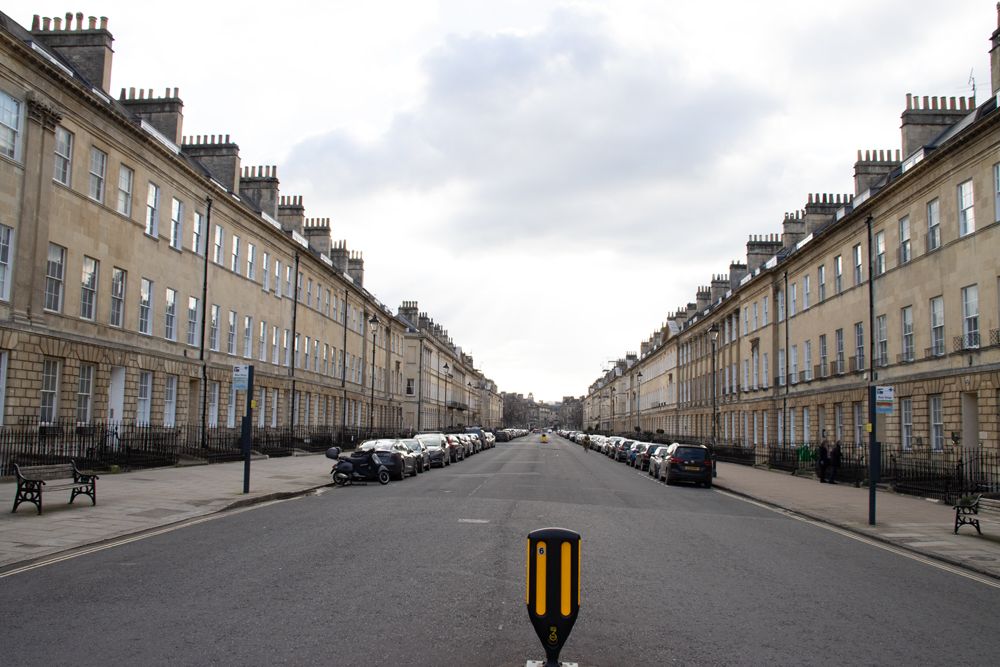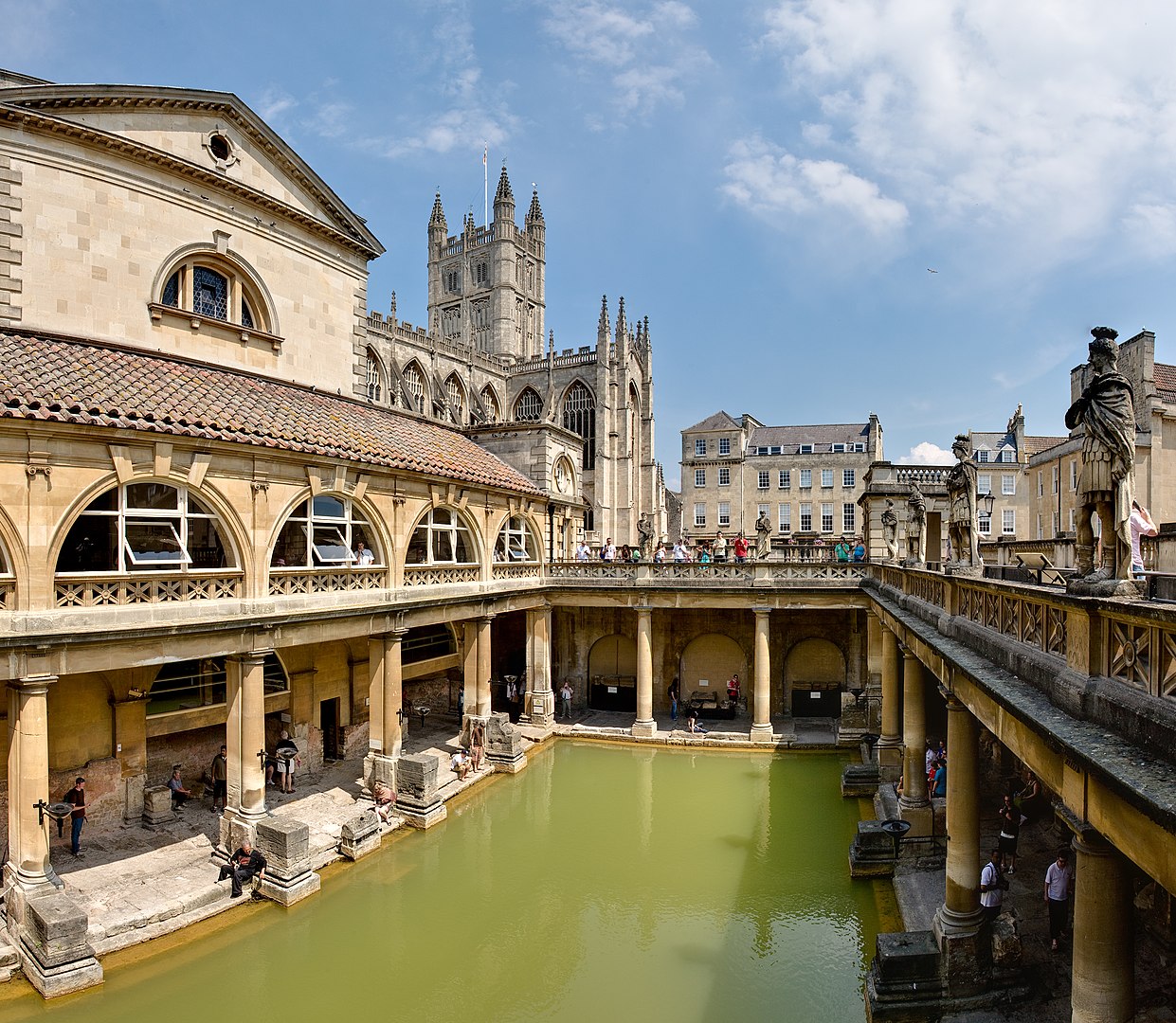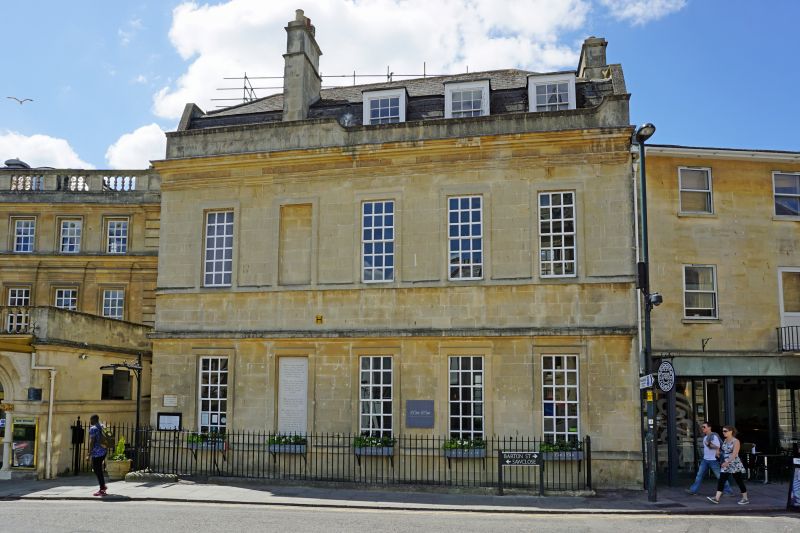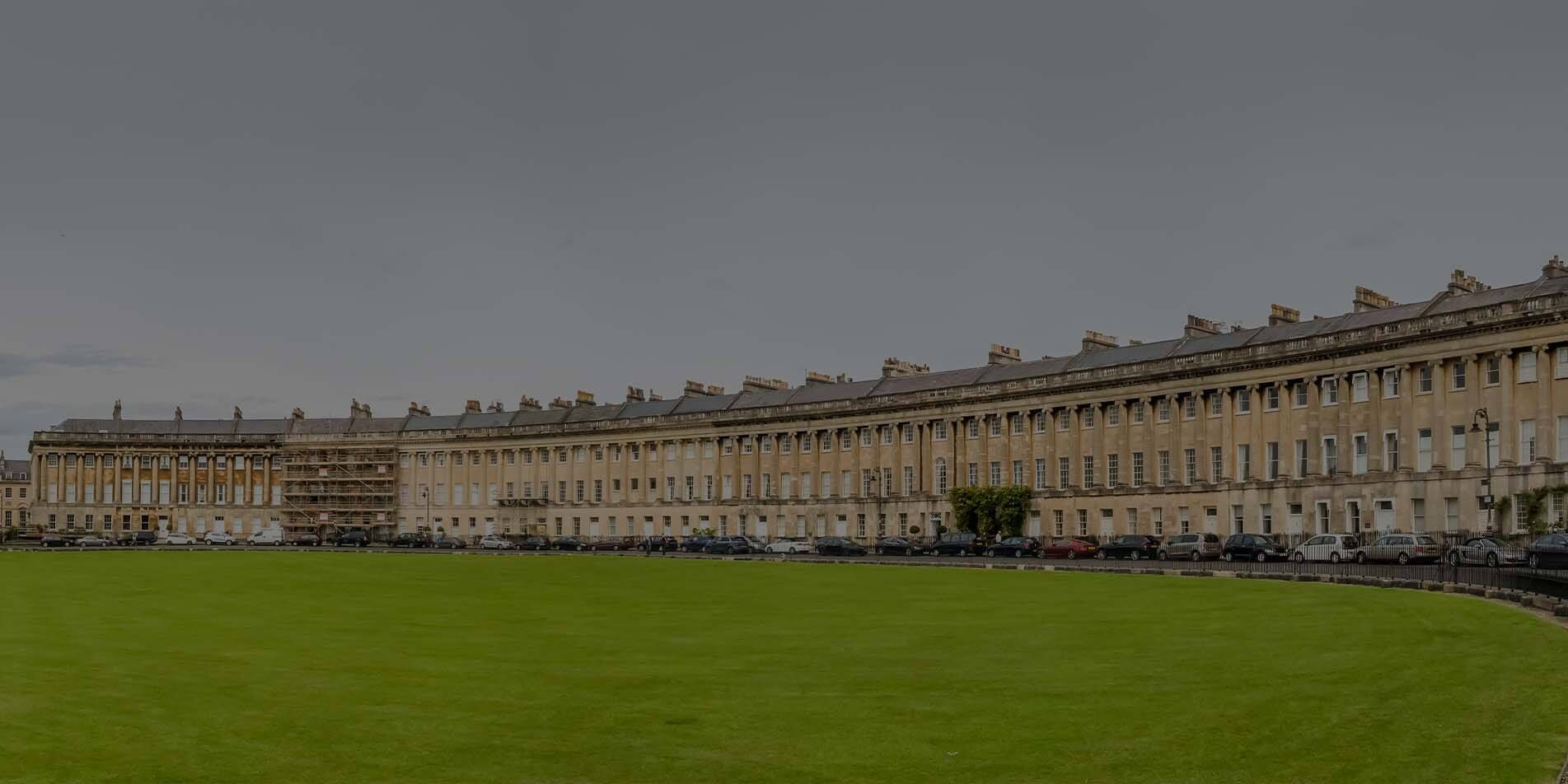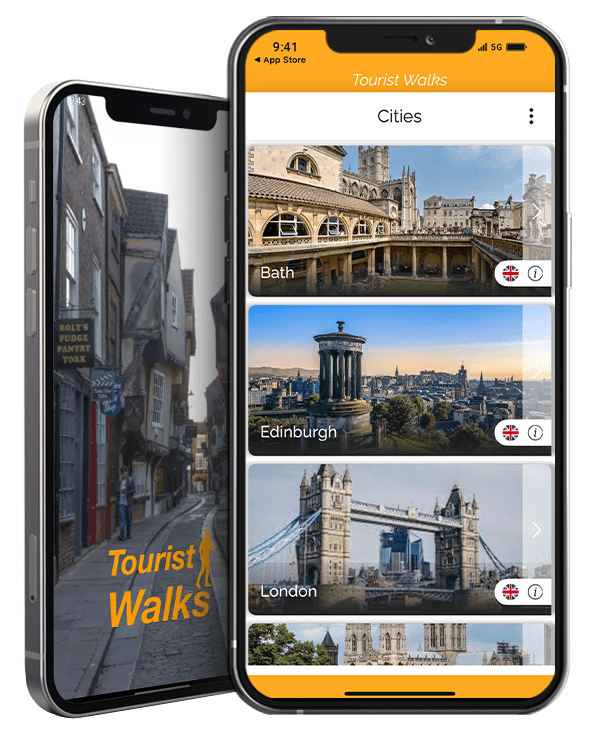
GEORGIAN SKYLINE WALK
This walks takes you around the architectural delights that have become synonymous with Bath. The beautiful Royal Crescent and the Circus. Not to mention Queens Square, the Assembly Rooms and all there is to see as we journey between them. This is the Bath of Jane Austen and Beau Nash where taking pleasure in the company of others became an art form. On this walk you also discover the stories behind these creations as well as visiting some less known tourist attractions.
Locations
Miles Covered
Users
Benefits
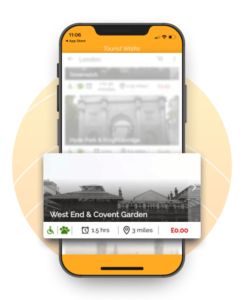
FREE App with A FREE WALK in Every City
Each walk delivers a unique and fascinating user experience. Through Tourist Walks’ self guided tour application you can explore the hidden gems created by local experts. For people wanting to explore the neighbourhood and experience the local culture, we provide a unique experience of exploring the city using GPS guided audio tours. We provide a free walk to our new users.

Full Audio Visual Commentary
Tourist Walks is an application that can give you the freedom to explore the famous walks at your own discretion. We have created a full audio-visual self-guided experience that gives you the confidence to explore and discover the stories of various cities on your own.

Visit the Best Tourist Sites & Explore Them
Get a list of all the tourist sites you can visit. The Tourist Walks application will guide you to your next destination because every journey starts with a single step.

GPS and Multilingual Audio and Text Guidance
Even if you don’t understand the local language of the city you are visiting, Don’t worry. Audio guided walks have multilingual text assistance that will guide you in your native language.

Start/Stop/Rewind
/Restart Go at Your Own Pace
Tourist Walks’ audios are narrated by professionals who will keep you entertained while you are walking your way to the next destination. We help you discover the city around you in a more impressive way.

Download the Walk App & Use Offline. No Mobile Data Required.
It is always frustrating when you wish to travel somewhere but your mobile phone service is out-of-order. Don’t worry! Tourist Walks comes with an offline version of built-in maps you might need, even without internet access.
- Free walk
- Full Audio Visual
- Tourist Sightseeing
- Multilingual Texts
- Easy Audio Access
- Offline App
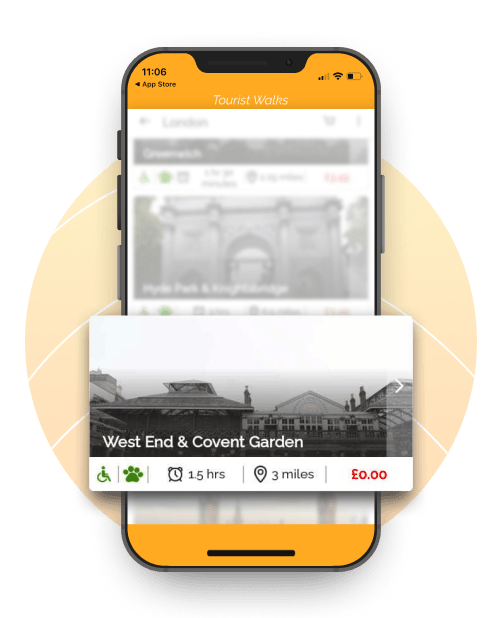
FREE App & Walk Summaries
Each walk delivers a unique and fascinating user experience. Through Tourist Walks’ self guided tour application you can explore the hidden gems created by local experts. For people wanting to explore the neighbourhood and experience the local culture, we provide a unique experience of exploring the city using GPS guided audio tours. The App is FREE, and all the walk summaries are FREE, each walk is individually priced and you can buy all the walks for a city at a discounted price.
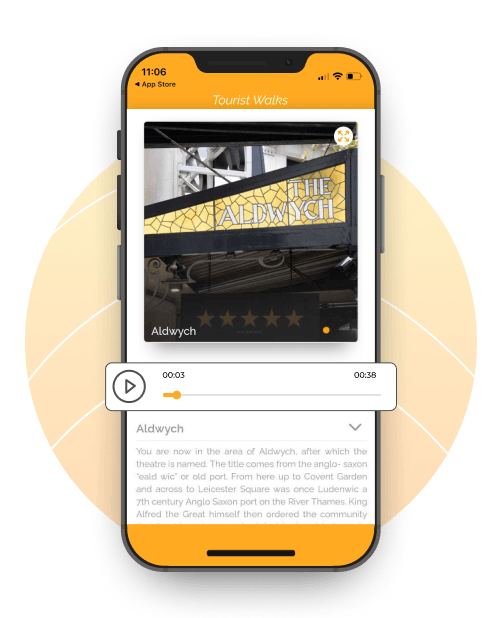
Full Audio Visual Commentary
Tourist Walks is an application that can give you the freedom to explore the famous walks at your own discretion. We have created a full audio-visual self-guided experience that gives you the confidence to explore and discover the stories of various cities on your own.

Visit the Best Tourist Sites & Explore Them
Get a list of all the tourist sites you can visit. The Tourist Walks application will guide you to your next destination because every journey starts with a single step.

GPS and Multilingual Audio and Text Guidance
Even if you don’t understand the local language of the city you are visiting, Don’t worry. Audio guided walks have multilingual text assistance that will guide you in your native language.

Start/Stop/Rewind
/Restart Go at Your Own Pace
Tourist Walks’ audios are narrated by professionals who will keep you entertained while you are walking your way to the next destination. We help you discover the city around you in a more impressive way.

Download the Walk App & Use Offline. No Mobile Data Required.
It is always frustrating when you wish to travel somewhere but your mobile phone service is out-of-order. Don’t worry! Tourist Walks comes with an offline version of built-in maps you might need, even without internet access.
Self-Guided Georgian Skyline Walk
- Tour Name - Georgian Skyline
- Tour Location - Bath
- No. of Attractions - #12
- Tour Starting Point - The Royal Crescent
- Tour Ending Point - The Circus
Attractions of Georgian Skyline Walk
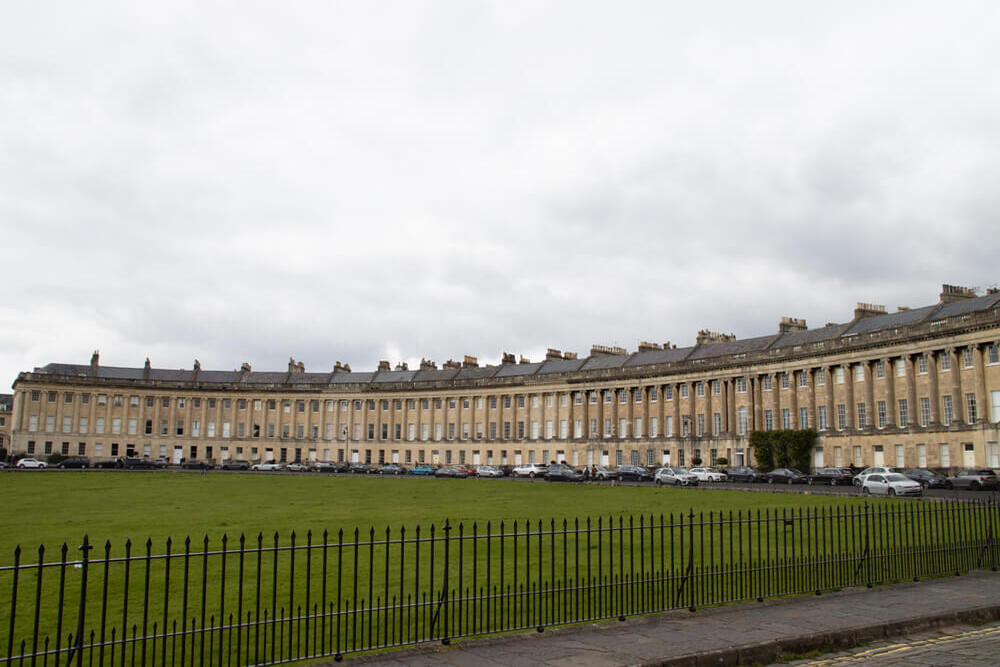
The Royal Crescent
The Royal Crescent is a beautiful row of 30 houses, laid out in a sweeping crescent. They were built between 1767 and 1774, by John Wood the younger. They are among the greatest examples of Georgian architecture to be found in the U.K., and they represent a new approach to architecture that had never been seen before. With definite masonic influences, the crescent was meant to represent the moon, the circus the sun, and Queen Square the earth, all connected by roads of equal length. The crescent is 150 metres long with 114 columns. There are several blue plaques to be seen along the crescent, of notable residents. Actually, most houses in Georgian Bath were rented for the “season”, by the wealthy visitors. The Crescent became the most fashionable place in Bath to be seen “parading”. Number 1 is now a museum, and shows how the wealthy owners of the houses here would have furnished their houses.
Christ Church
Christ Church, built in 1798, and it was the first free church in England since the Reformation. It was for those who lived and worked in the Upper Town, such as servants, who could not afford to pay for their seat in church. The long building to the left was a riding school in Georgian times. In between the two buildings, and at the top of the steps, was a Royal Tennis Court dating from 1777, which now houses a fascinating museum of “Bath at Work”. The museum details a more realistic sense of what Bath was like for the ordinary people, rather than the wealthy and the elite.
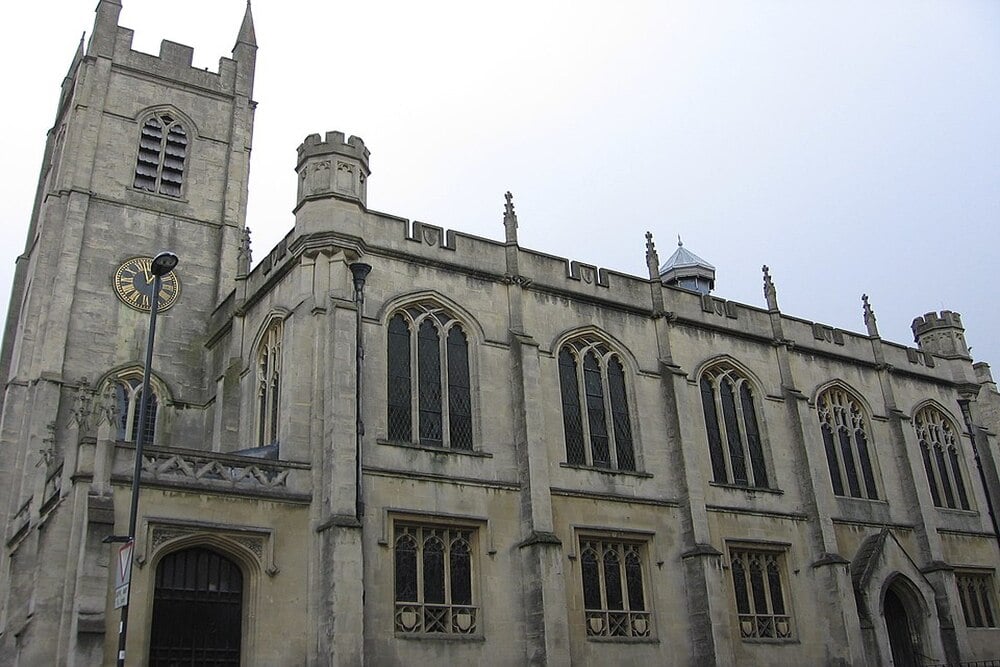
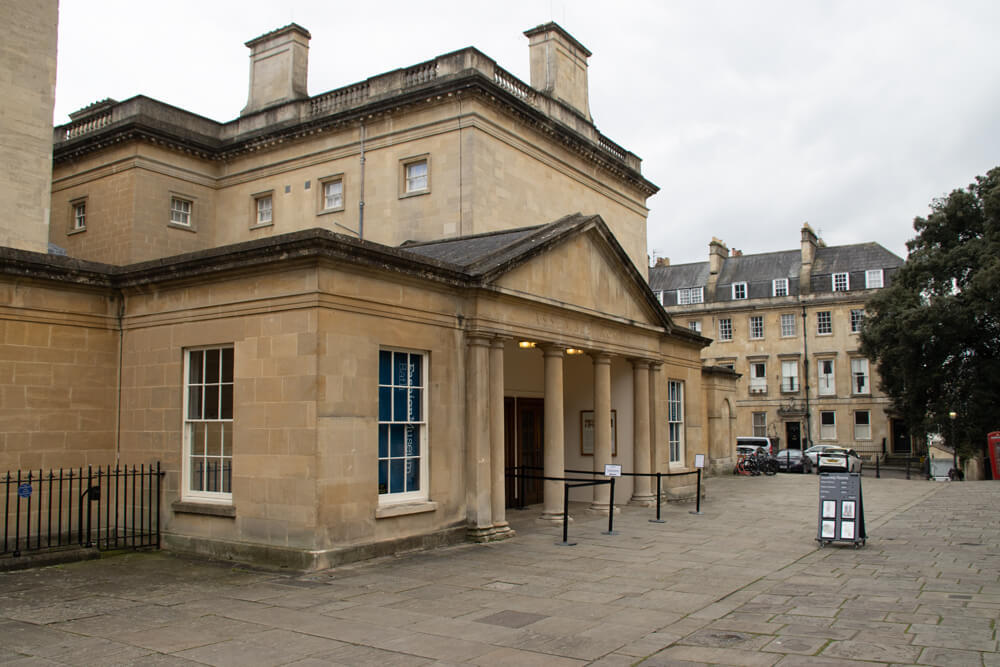
The Assembly Rooms
The Assembly Rooms in Bath were designed by John Wood, the younger, in 1769. This was the venue for balls, concerts, and gambling. It was definitely visited by both Jane Austen, and Charles Dickens, as well as various members of the nobility. The ballroom is 30 metres long, and has the largest interior in Bath. There is a tea room, a card room, and the octagon, all with crystal chandeliers, and decorated with fine art. The area outside the entrance would have been full of sedan chairs on an event night, picking up and dropping off its wealthy patrons. It is now run by the National Trust, and is worth a visit just to experience a little of what Georgian night life was like.
The Saracens Head
The Saracens Head pub is a gabled inn, that dates from 1713. Charles Dickens is thought to be one of its many customers. Next door is St Michaels Church, which is of medieval origin, and which lay just outside the north gate of the medieval city. This church was built on the site of previous ones in 1835. The spire is particularly impressive, as is its Sweetland organ.
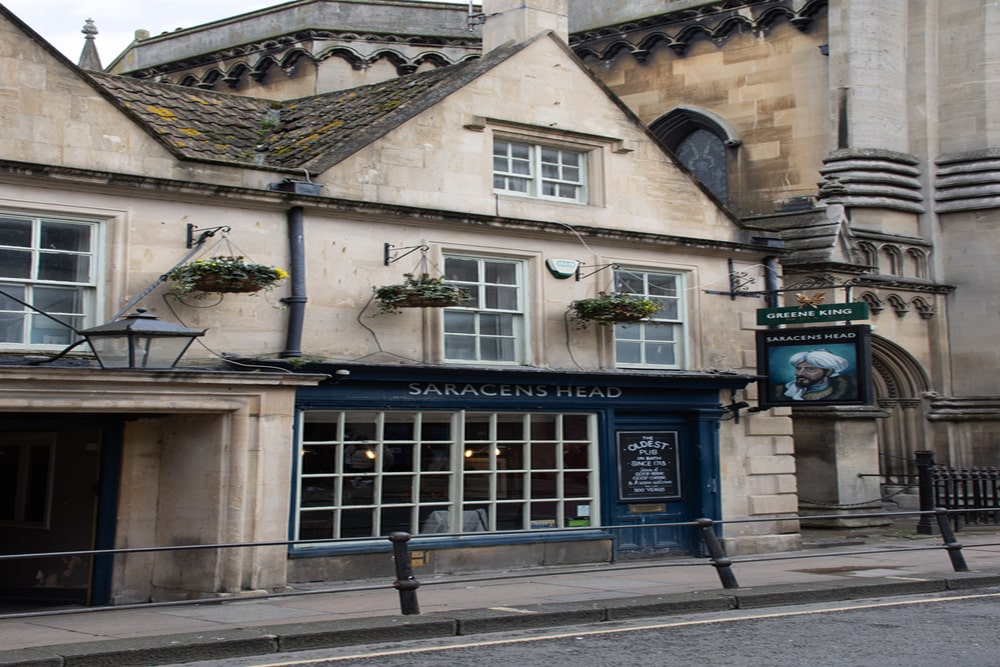
Book Your Georgian Skyline Walk Today!


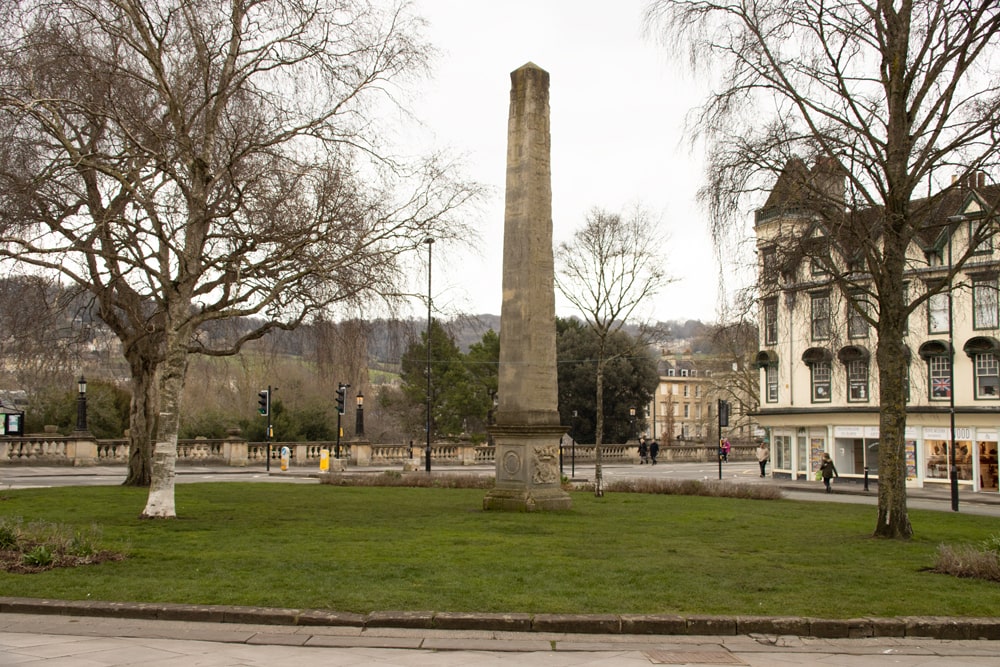
The Orange Grove
The Orange Grove was created in the early eighteenth century as a social walking area, and was one of the earliest of the popular places to be seen. The “Orange Grove” is now a well-kept floral roundabout, enjoying wonderful views of Bath Abbey. The Orange Grove features a central obelisk, which was erected by Beau Nash, to commemorate the Prince of Orange’s visit to the city. He came to take the waters in 1734. It was after this visit that the name Orange Grove was adopted. Since World War II, the garden has been dedicated to the link between the cities of Bath and Alkmaar, in the Netherlands, one of Bath’s twin cities.
North Parade Grotto
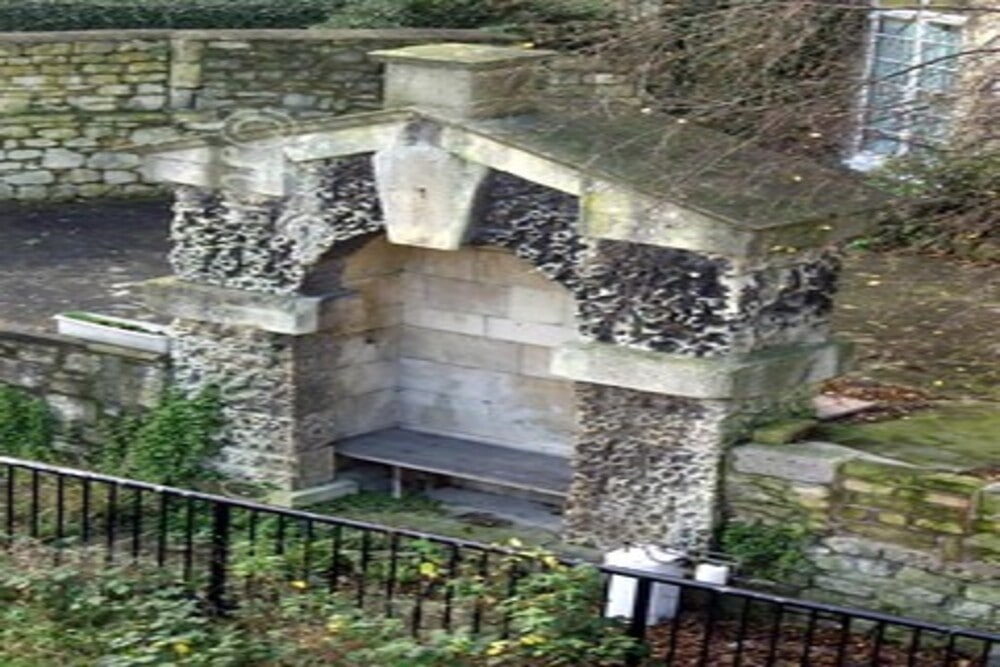
The grotto was where the celebrated beauty, and singer, Elizabeth Linley, held secret meetings with her admirer, Richard Sheridan. They eventually eloped to France together in 1772, with Richard and his sister helping Elizabeth escape from her fathers house, at number 11 Royal Crescent. Her father had a reputation for overworking his daughters, making them perform in many concerts. Richard and Elizabeth were married in 1773, in London. It caused such a sensation, that a play about it appeared on a London stage. Elizabeth was painted several times by Thomas Gainsborough, who was a family friend.
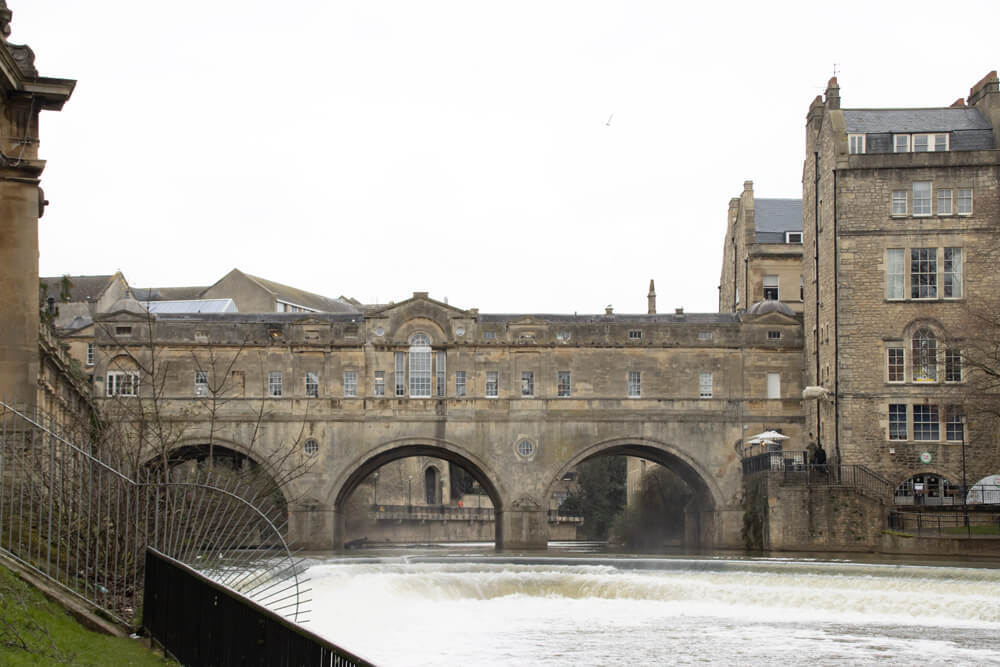
Pulteney Bridge
In 1770, William Pulteney commissioned the famous architect Richard Adam, to design this bridge. It’s purpose was to link the City centre with Bathwick, on the other side of the river Avon. It is believed Adam was inspired by the Ponte Vecchio, in Florence, where shops line the bridge in the same way. Pulteney Bridge leads into Great Pulteney Street. That street is possibly Baths most magnificent residential avenue. However, we will not be crossing the river on this walk, that pleasure can be experienced on our “Across the River” walk.
The Old Green Tree Pub
Green Street was one of the first streets to be built outside the walls, in the early eighteenth century, and shows what architecture was like before the arrival of John Wood. It was called Green Street because it was built on the site of a bowling green, that had a large tree at one end, that gave shade to the players on hot days. The Old Green Tree Tavern was built on the site of that tree around 1716. It is one of Bath’s most traditional pubs.
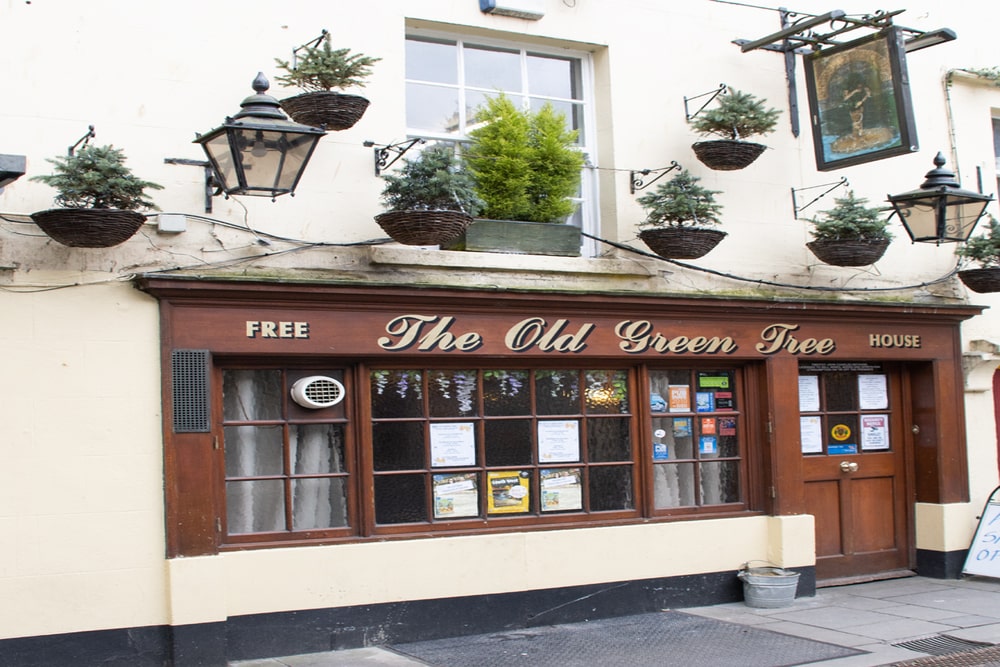
Book Your Georgian Skyline Walk Today!


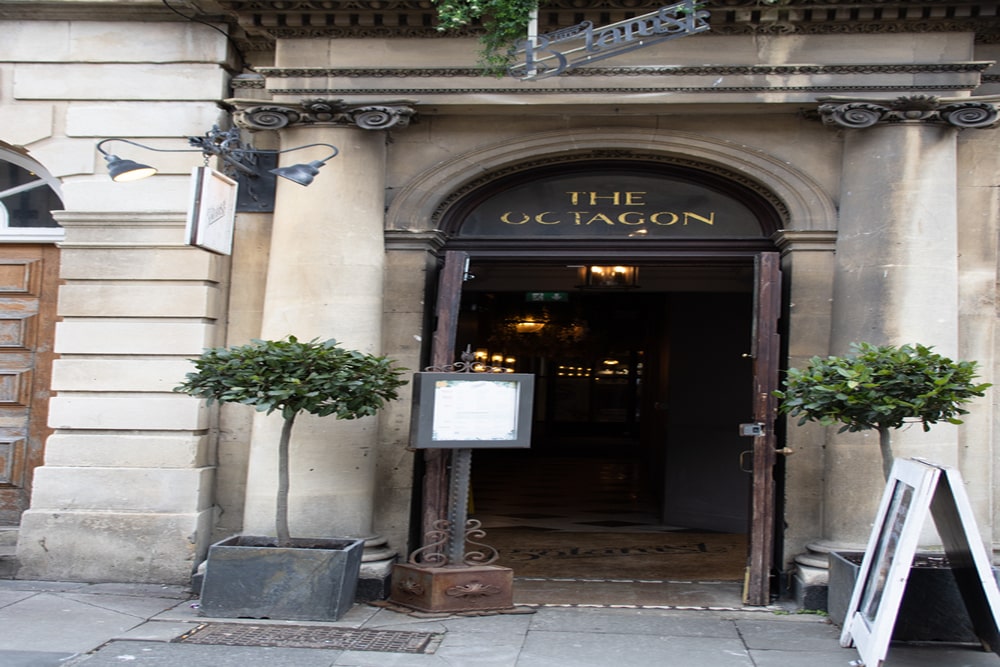
The Octagon Chapel
The building was designed as a church, with the aim of creating a space that was comfortable, warm, and well lit. It became a very fashionable church to attend, with many eminent visitors, including Jane Austen, renting pews for as long as they were in town. Some of these were like small rooms, with a fireplace, and easy chairs. The vaults were rented out to a wine merchant, which gave rise to some verses by Christopher Anstey.
Spirits above and spirits below,
Spirits of Bliss and spirits of woe,
The spirits above are spirits Divine,
The spirits below are spirits of wine.
It was therefore not popular with the teetotal Methodists.
Queen Square
Like Bath Abbey, Queen Square was inspired by a dream. John Wood, the Elder, saw visions of a new Rome in Bath, so he created this square in 1734. He named it after Queen Caroline, the wife of George II. He was so pleased with the result, that he set up home in number 2, on the east side of the square, which together with number 3, has grotesque carvings of heads over the doors. The square is dominated by the Palladium style houses on the north side, which he meant to look like the façade of a palace. Unfortunately, the houses on the south side were destroyed by bombing in 1942, and were replaced by a hotel. The obelisk in the centre was set up by Beau Nash, to commemorate the visit of the Prince and Princess of Wales, in 1738. The obelisk is meant to portray the Masonic symbol of a ray of light, emanating from the sun.
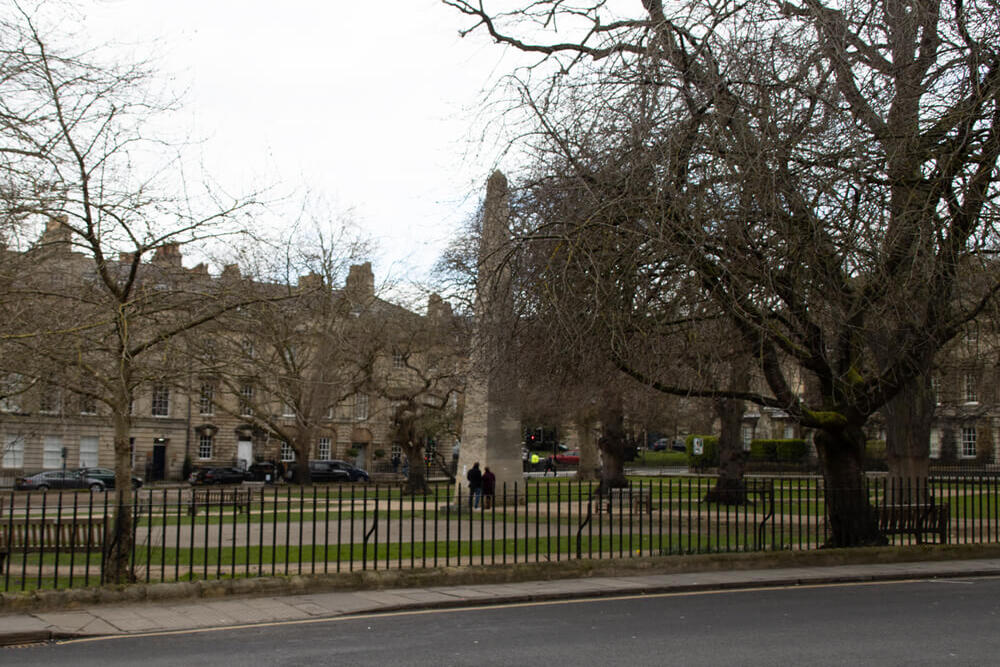
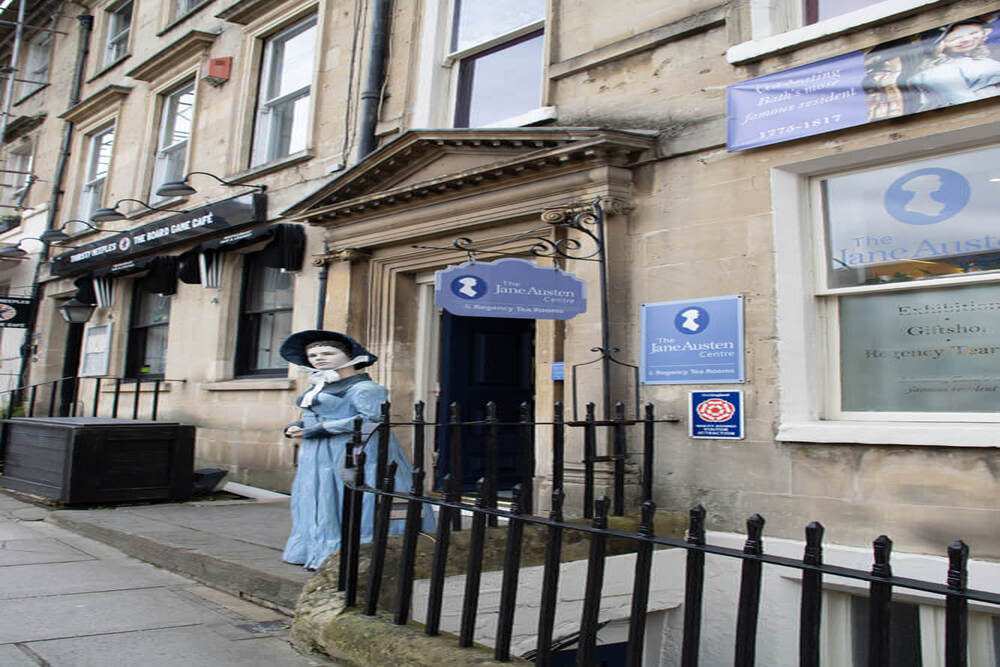
The Jane Austen Centre
The Jane Austen Centre focuses on the life and works of Jane Austen, as well as the Regency period in which she lived. This is a recommended tourist attraction, with an immersive and interactive experience, with actor guides in Regency costume, bringing her works to life. Her works primarily include six major novels. Her stories often explore the dependence of women on marriage, often in the pursuit of favourable social standing and economic security. She gained her fame mainly after her death, when her novels were republished. Her works have inspired a large number of films, probably the most famous being Pride and Prejudice.
The Circus
The Circus’s full title is “The Kings Circus”. This was the first perfectly circular space in the history of British town planning. Its design reminds us of the Colosseum in Rome, and contains examples of the classical styles of columns. The architect was John Wood the elder, and he was actually heavily influenced by the nearby druid temple of Stonehenge, which he had studied in great detail. The acorns on the parapets remind us of the sacred tree of the druids, the oak. He died shortly after building commenced in 1754, so he never got to see his masterpiece. It was completed by his son John Wood the younger, in 1766. It has had a number of famous former residents including William Pitt the elder, at number 7, Dr Livingstone, at number 13, Lord Clive of India, at number 14 and the painter Gainsborough, at number 17.
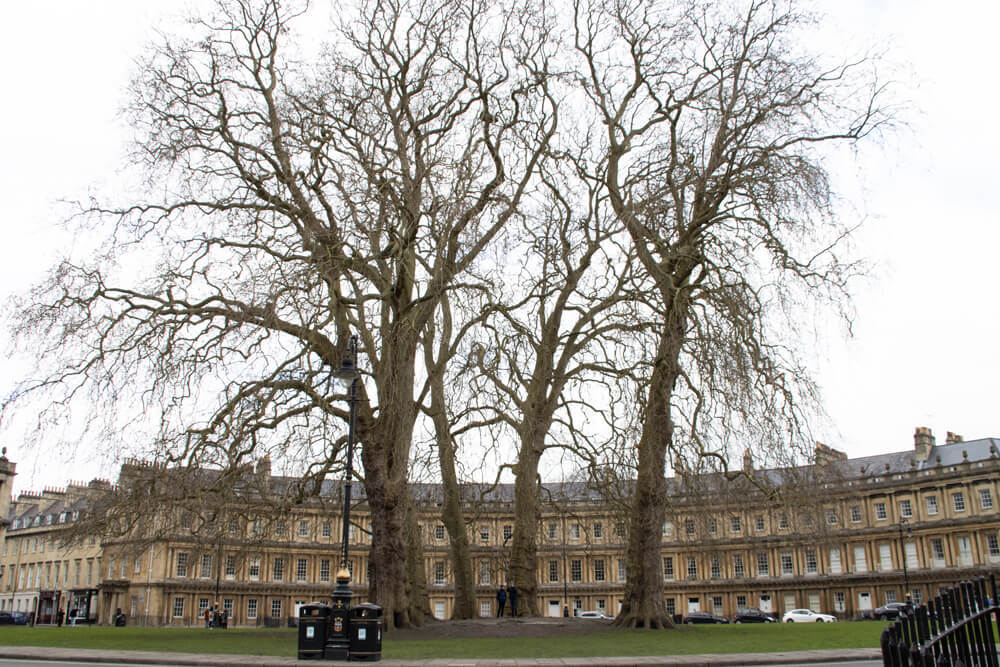
London Pub Walks Video Gallery
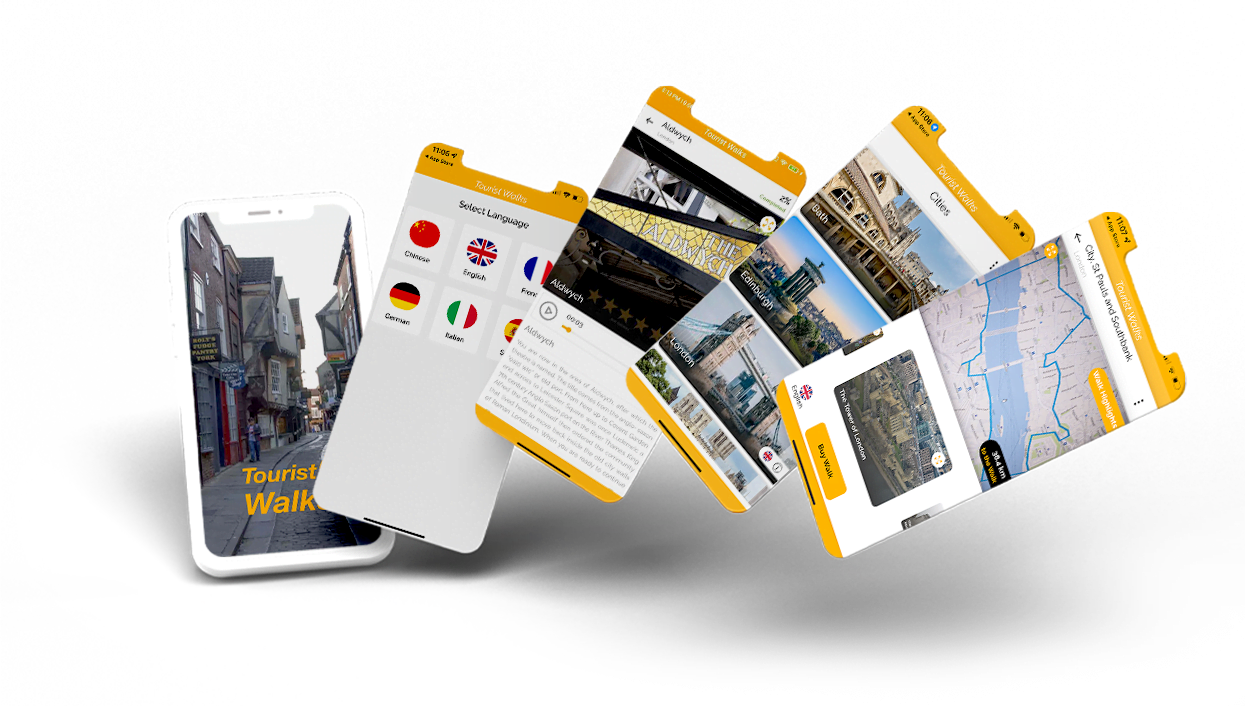
SELF GUIDED WALKS
Do you wish to explore all the beautiful tourist spots? Download our application and discover the hidden beauty and mystery of your destination. Explore today!


Frequently Asked Questions
No. After the walks have been downloaded, for which you need an internet connection, no mobile data is required to do the walks.
No you can pause and resume at any point within the walk. Whether you need a coffee or a comfort break the walks are entirely flexible.
Yes you will receive both verbal guidance and a GPS enabled map to take you around each of the points of interest on the walks.
No the walks are circular so you will receive multiple options of where to start each walk.
Yes there are providing you buy them as a bundle, not one at a time. You can even buy all the walks in one package at a very generous price.
For each point of interest you will get information both verbally and in text and sometimes video form together with helpful images to get the most from each one.
You can pay by all manner of credit and debit cards as well as Paypal.
In the walk summary we point out if the walk is suitable for wheelchairs and pets, and there is also an indication of the distance of the walk, and how long it will take.
Yes we would love to hear from you through our website: www.touristwalks.co.uk
Happy Tourists

I absolutely enjoyed using the Tourist Walk app! The guided walking tours are very informative and interesting. I was able to find the tour I wanted quickly and easily, and the app was very easy to navigate. The walking tour itself was a lot of fun, and I learned a lot about the city. Overall, I would highly recommend this.

Carla Mathew
Tourist Walk is an excellent walking guide app. It is extremely user-friendly and provides great information on the various tours available. I would highly recommend this app to anyone visiting a new city!

Shaun Miles
Tourist Walk is an amazing app that provides guided tours of various cities. The app is extremely user-friendly and easy to navigate. I was able to find the tour I was looking for quickly and easily. The tour itself was very informative and interesting. I would highly recommend this app to anyone visiting a new city!


